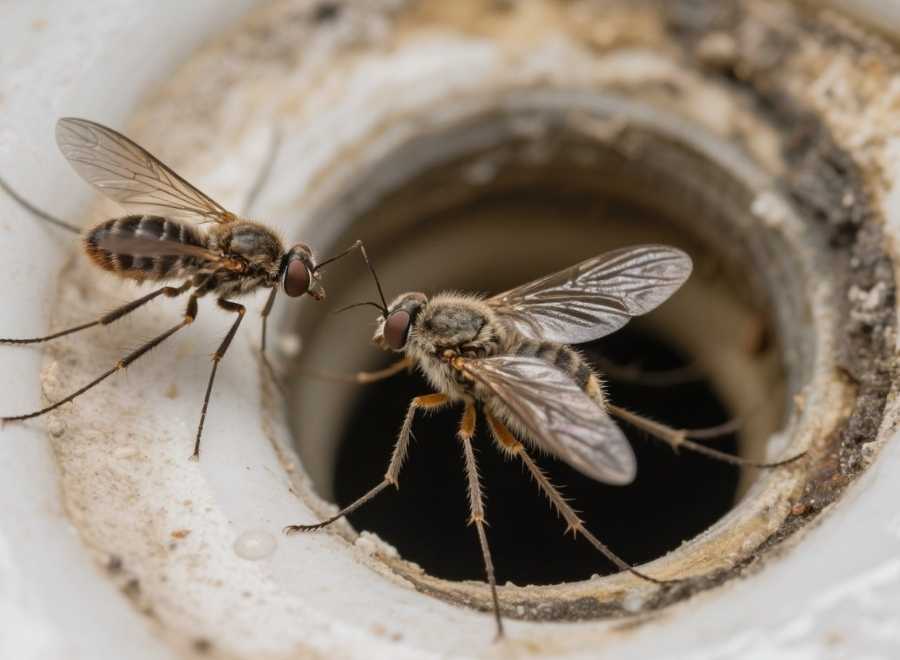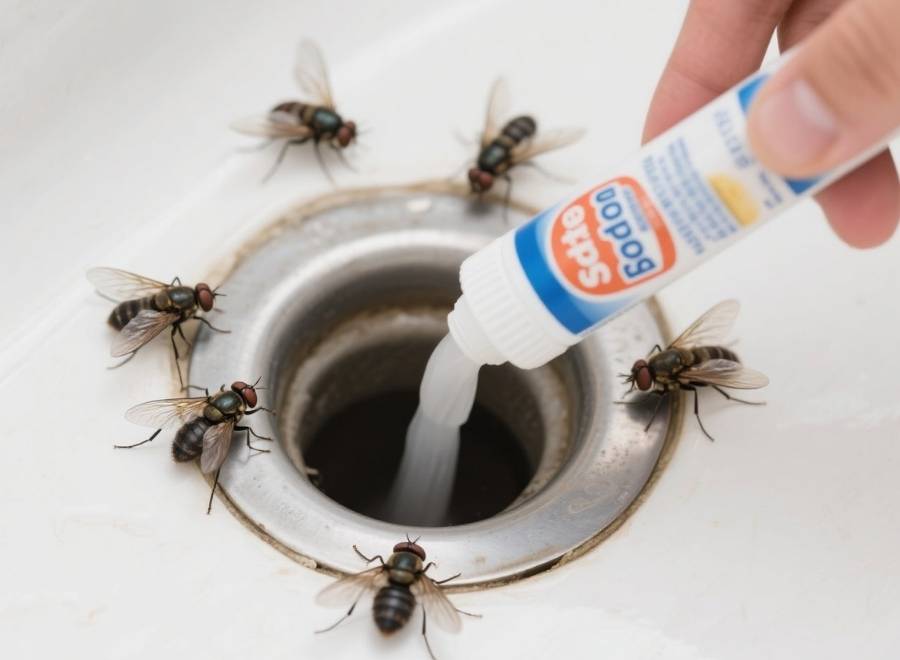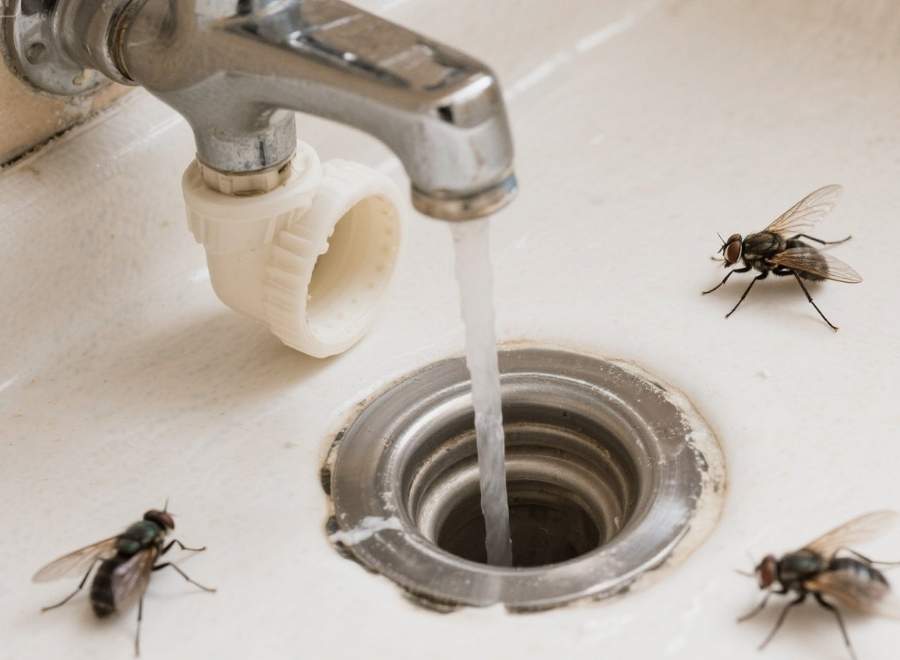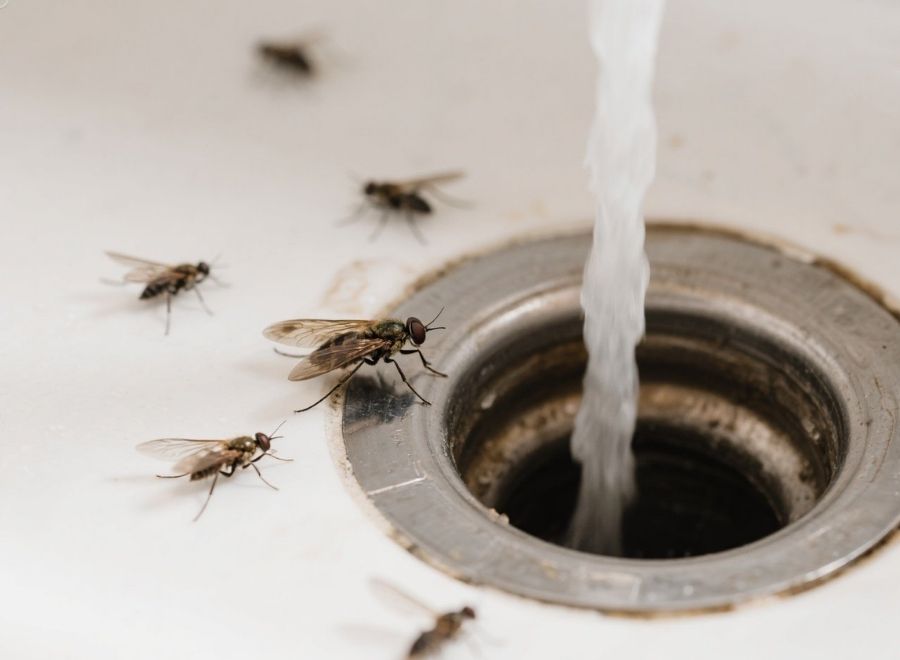Are tiny, pesky flies swarming around your kitchen or bathroom drains? Chances are, you’re dealing with drain flies (sometimes called sewer gnats or moth flies). While they’re not harmful, these insects can quickly become a nuisance, denting your peace of mind and the cleanliness of your home.
But don’t worry! This guide walks you through everything you need to know about how to get rid of drain flies effectively, as well as how to prevent them from making a comeback.
Whether you’re a homeowner, a renter, or a property manager, this solution-focused guide has you covered.
What Are Drain Flies?

Before jumping into removal techniques, it’s important to understand what these bugs are and why they appear.
What do drain flies look like?
Drain flies are small, around ⅛ inch long, with fuzzy, moth-like wings. Their grayish-brown bodies and erratic flight patterns make them easy to identify.
Where do they come from?
Drain flies thrive in moist, organic matter commonly found in drains, pipes, and stagnant water. They feed and breed in the gunk inside your drains, so spotting them often points to a buildup of grime or stagnant conditions in your plumbing.
Common places drain flies inhabit include:
- Kitchen sink drains
- Bathroom shower or bathtub drains
- Basement floor drains
- Leaky pipes or other areas with pooling water
Are drain flies harmful?
The good news? Drain flies don’t bite, sting, or spread diseases like other pests. However, their presence often indicates unsanitary conditions in your drainage system, which could lead to bad odors or clogging problems.
Now that you know where they come from, it’s time to tackle the problem head-on.
How to Get Rid of Drain Flies in 6 Easy Steps

Taking care of a drain fly infestation doesn’t require heavy-duty pest control. With some effort and household supplies, you can eliminate these unwanted guests at the source.
Step 1: Confirm the Source of the Infestation
Before treating the problem, identify which drain the flies are coming from. To do this:
- Cover the suspected drain with clear tape.
- Leave it overnight, checking for any flies that stick to the tape in the morning.
- Repeat the process for other drains if necessary.
This will help you pinpoint the exact breeding ground so you focus efforts where they’re needed most.
Step 2: Clean the Affected Drain Thoroughly
Now that you know where they’re coming from, it’s time to clean the drain to break the cycle of breeding. Here’s how:
- Start with Boiling Water
Pour a large pot of boiling water down the drain to loosen up grime and clean out surface debris.
- Use a Brush or Snake
Use a pipe brush or plumbing snake to scrub away buildup inside the pipes where larvae may live.
- Apply a Drain Cleaner
Choose a natural bio-enzyme cleaner (safe for pipes) to break down the organic matter lurking in your drain. Avoid harsh chemical cleaners, as they can damage plumbing over time.
Step 3: Kill Existing Drain Flies
To eliminate adult flies, try the following methods:
- Dish Soap Trap
Fill a shallow bowl with water, a few drops of dish soap, and a splash of apple cider vinegar. Place it near the affected drain to attract and trap the flies.
- DIY Spray
Mix equal parts water and isopropyl alcohol in a spray bottle, then use it to spray and kill any visible flies.
Step 4: Flush the Drains Regularly
Once clean, make it a habit to maintain your drains by flushing them with boiling water or enzyme cleaners weekly. This will help wash away any developing larvae and prevent new infestations.
Step 5: Repair Any Leaks
Check for leaky pipes or standing water areas near the drain. Fixing these issues will stop moisture buildup, which is essential to keeping drain flies at bay.
Step 6: Monitor for Any Recurrence
After treatment, monitor your drains for activity over the next couple of weeks. If flies return or persist, you may need to repeat the cleaning steps or contact a plumbing professional to inspect for deeper clogging or damage.
How to Prevent Drain Flies Long-Term

Prevention is the key to keeping drain flies from returning. Here are some smart steps to maintain a drain-fly-free home.
1. Keep Drains Clean
- Use strainers to catch debris and prevent buildup.
- Flush all unused drains (e.g., basement or guest bathroom) at least once a week.
2. Fix Plumbing Issues Promptly
Leaky pipes or faulty drainage setups create the moist environment flies love. Quick repairs save you time and trouble in the long run.
3. Avoid Storing Stagnant Water
Ensure buckets, sinks, or other containers holding water are emptied regularly.
4. Use Natural Cleaners Regularly
Pour enzyme cleaners or a baking soda and vinegar mix down your drains on a monthly basis to keep them clean and free of buildup.
When to Call a Professional
If you’ve tried every DIY solution and are still battling drain flies, it might be time to call in the pros. A professional plumber or pest control service can inspect your plumbing for hidden issues, like deep clogs or unnoticed leaks, that may be fueling the infestation.
Enjoy a Fly-Free Home
By following these steps, you can eliminate drain flies quickly and with confidence. Remember, tackling the source of the problem is the key to long-term success.
Preventing drain flies requires maintenance, but the reward is a cleaner, more inviting home. Now, go ahead and reclaim your space!











